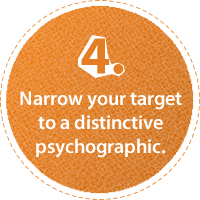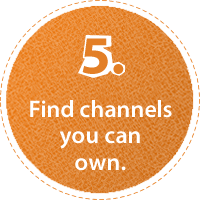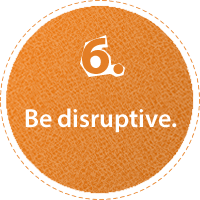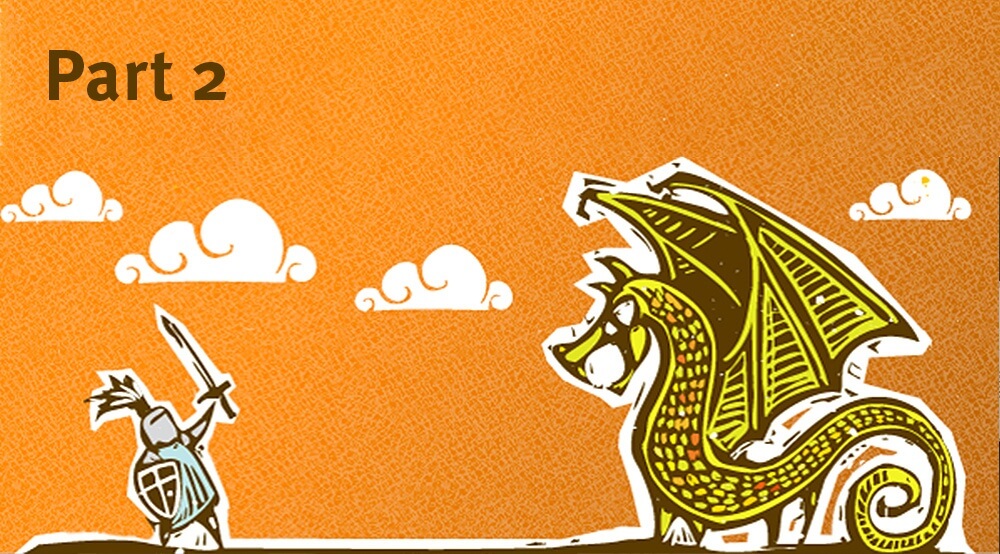Just as genetic mutation is the driver of evolution, so do Challenger Brands create the consumer demand that drives our markets. Without Challenger Brands, categories stagnate. Market leaders stick with what got them there, and shy away from change or innovation. Consumers suffer.
Where would the auto industry be without Challenger Brands sparking consumer desire? Like Cold War-era East Berliners, we’d all be driving a Trabant.
Challenger Brands have to do more with less. They need to create a new conversation, redefine the product landscape, and disrupt years of ingrained behavior, all without the budget of the market leader they’re up against.
Yield shares the DNA of the Challenger Brand, and our years of experience has uncovered a distinct set of best practices that are common to many of these challenger scenarios. Understanding them – and putting them into relevant practice with your brand – is crucial to your success.
Last time we tackled the fundamental first three: Establish a distinctive point of difference. Find the white space. Take educated risks.
This week, three insights at the outset of the Challenger Brand journey: Narrow your target. Find channels you can own. Be disruptive.

4. Narrow your target to a distinctive psychographic.
The old Marketing School cliché goes “You can’t be all things to all people.” And we all nod in agreement. But the hard truth in this is accepting which consumers you are going to let go in order to speak more profoundly to the ones you want.
A target has to be specific. “Busy Moms” doesn’t cut it. That’s not a target, that’s a generation. “Busy Moms” is so unfocused a target, it encompasses “Busy Dads!”
The key is to identify a psychographic subset of the target that can be appealed to specifically, ideally a target that sees themselves as small and unique, but are in fact growing. What unites this group in terms of their experience and outlook? What can we say to them specifically, that the market leader would never be so specific to say? The more you know about your target, the smarter you can be in terms of messaging, media choices and social media strategies.
We worked with Cavendish Farms to narrow the psychographic profile of their target, from the inevitable “Busy Moms” to a psychographic subset deeply concerned about the quality of the food they put on their family’s table – sensitive to local, sustainable, single-source farming and wholesome, minimally-processed foods. That’s a mindset that aligns quite nicely with the From The Farm frozen potato brand, sourced from just a few dozen PEI potato farms and prepared simply with just a touch of sea salt and canola oil. It’s a small, unique target the brand can speak to directly.
But crucially, as shoppers become more aware and more troubled by food source issues, it’s a group that will grow. As the unique psychographic becomes more widespread, the Challenger Brand is already positioned to fulfill their needs.

5. Find channels you can own.
The thing with Goliath is, he’s strong. You can’t beat him on strength.
When the discussion turns to media channels, the inevitable question is how to gain a significant share of voice against a market leader who can significantly outspend you. The answer is . you can’t beat him on strength.
With a clear understanding of your specific target however, you can find channels that speak more specifically to your demographic, channels that are too specific for the market leader to use in talking to their broader audience. These are the channels you can dominate, and they won’t.
For what it would cost to develop only a fraction of their TV presence, you could dominate Radio. For the cost of a national Outdoor or Print campaign, you could hand select certain publications and specific outdoor sites and become known for those executions.
A brilliant example? HSBC has virtually created – and then gone on to own – the medium of the airport Jet-way. They do plenty of other advertising, but this is the work we’ve ALL seen.

6. Be disruptive.
At the Formula 1 Canadian Grand Prix, a sport dominated by oil company advertising, major auto manufacturers, electronics giants, tire sponsors and other global corporations, Quebec Tourism has always placed a single billboard on Turn 13, one of the trickiest, narrowest chicanes in racing. When drivers miss this turn – and the wall here has claimed every World Champion driver at least once – they literally crash into a poster that reads “Bienvenue au Québec.” That one ad generates more awareness than anything else on the circuit.
Is Quebec a Challenger Brand? Well, in terms of international travel marketing it probably sits somewhere behind Las Vegas in top-of-mind awareness, and somewhere behind Disneyland in terms of advertising spend. What is clear is that one unassuming, distinctive ad can do more than a multi-million-dollar campaign if it stands out from the expected.
No advertiser can allow themselves to wallow in the sameness and invisibility of expectedness. But for Challenger Brands it is even more critical. Every dollar must count. Every execution must count. Every media insertion must count. Without a fearless approach to disrupting how consumers see your brand, your mounting challenge will never be seen.
Next time, two key internal issues that must be resolved before a Challenger Brand can make a sustained, effective push: Ensure internal alignment from the beginning. Invest for the long term.






